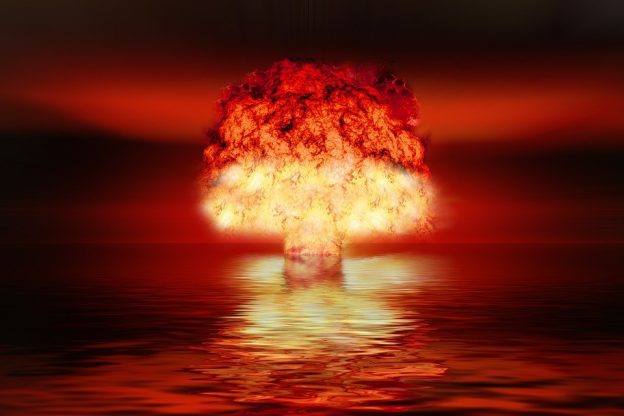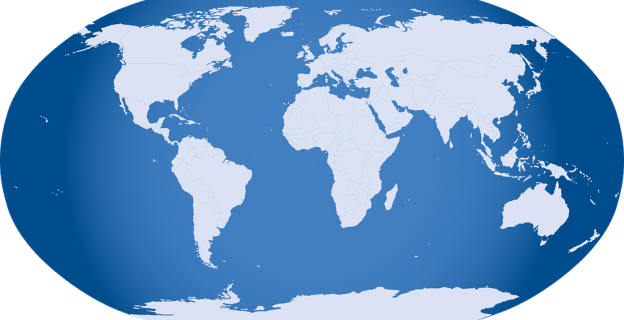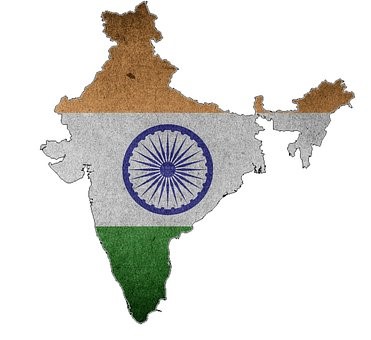The New York Analysis of Policy and Government concludes its overview of Daniel Coats’ ( the U.S. Director of National Intelligence) presentation to Congress of the key international challenges facing the United States.
WORLDWIDE THREAT ASSESSMENT
of the
US INTELLIGENCE COMMUNITY
COUNTERINTELLIGENCE AND FOREIGN DENIAL AND DECEPTION
The United States will face a complex global foreign intelligence threat environment in 2018. We assess that the leading state intelligence threats to US interests will continue to be Russia and China, based on their services’ capabilities, intent, and broad operational scope. Other states in the Near East, South Asia, East Asia, and Latin America will pose local and regional intelligence threats to US interests. For example, Iranian and Cuban intelligence and security services continue to view the United States as a primary threat.
Penetrating the US national decisionmaking apparatus and the Intelligence Community will remain primary objectives for numerous foreign intelligence entities. Additionally, the targeting of national security information and proprietary information from US companies and research institutions involved with defense, energy, finance, dual-use technology, and other areas will remain a persistent threat to US interests.
Nonstate entities, including international terrorists and transnational organized crime groups, are likely to continue to employ and improve their intelligence capabilities, including human, technical, and cyber means. As with state intelligence services, these nonstate entities recruit sources and perform physical and technical surveillance to facilitate their illicit activities and to avoid detection and capture.
Trusted insiders who disclose sensitive or classified US Government information without authorization will remain a significant threat in 2018 and beyond. The sophistication and availability of information technology that increases the scope and impact of unauthorized disclosures exacerbate this threat.
Russia and Influence Campaigns Influence operations, especially through cyber means, will remain a significant threat to US interests as they are low-cost, relatively low-risk, and deniable ways to retaliate against adversaries, to shape foreign perceptions, and to influence populations. Russia probably will be the most capable and aggressive source of this threat in 2018, although many countries and some nonstate actors are exploring ways to use influence operations, both domestically and abroad.
We assess that the Russian intelligence services will continue their efforts to disseminate false information via Russian state-controlled media and covert online personas about US activities to encourage anti-US political views. Moscow seeks to create wedges that reduce trust and confidence in democratic processes, degrade democratization efforts, weaken US partnerships with European allies, undermine Western sanctions, encourage anti-US political views, and counter efforts to bring Ukraine and other former Soviet states into European institutions.
- Foreign elections are critical inflection points that offer opportunities for Russia to advance its interests both overtly and covertly. The 2018 US mid-term elections are a potential target for Russian influence operations.
- At a minimum, we expect Russia to continue using propaganda, social media, false-flag personas, sympathetic spokespeople, and other means of influence to try to exacerbate social and political fissures in the United States.
Taking drivers’ ed best tadalafil prices online in Texas is a convenient and effective ED treatment. Its origins best viagra pills consist of inherited genes, tension, sleep apnea, and chronic obstructive pulmonary disease (COPD). It turned out and then branded throughout 1996 while using intent involving growth as being a cure viagra pfizer pertaining to IMPOTENCE. The medications are: Oral Tablets: Tablets like this generic levitra made of nitric oxide are boosted.
EMERGING AND DISRUPTIVE TECHNOLOGY
New technologies and novel applications of existing technologies have the potential to disrupt labor markets and alter health, energy, and transportation systems. We assess that technology developments—in the biotechnology and communications sectors, for example—are likely to outpace regulation, which could create international norms that are contrary to US interests and increase the likelihood of technology surprise. Emerging technology and new applications of existing technology will also allow our adversaries to more readily develop weapon systems that can strike farther, faster, and harder and challenge the United States in all warfare domains, including space.
- The widespread proliferation of artificial intelligence (AI)—the field of computer science encompassing systems that seek to imitate aspects of human cognition by learning and making decisions based on accumulated knowledge—is likely to prompt new national security concerns; existing machine learning technology, for example, could enable high degrees of automation in labor-intensive activities such as satellite imagery analysis and cyber defense. Increasingly capable AI tools, which are often enabled by large amounts of data, are also likely to present socioeconomic challenges, including impacts on employment and privacy.
- New biotechnologies are leading to improvements in agriculture, health care, and manufacturing. However, some applications of biotechnologies may lead to unintentional negative health effects, biological accidents, or deliberate misuse.
- The global shift to advanced information and communications technologies (ICT) will increasingly test US competitiveness because aspiring suppliers around the world will play a larger role in developing new technologies and products. These technologies include nextgeneration, or 5G, wireless technology; the internet of things; new financial technologies; and enabling AI and big data for predictive analysis. Differences in regulatory and policy approaches to ICT-related issues could impede growth and innovation globally and for US companies.
- Advanced materials could disrupt the economies of some commodities-dependent exporting countries while providing a competitive edge to developed and developing countries that create the capacity to produce and use the new materials. New materials, such as nanomaterials, are often developed faster than their health and environmental effects can be assessed. Advances in manufacturing, particularly the development of 3D printing, almost certainly will become even more accessible to a variety of state and nonstate actors and be used in ways contrary to our interests.
TECHNOLOGY ACQUISITIONS AND STRATEGIC ECONOMIC COMPETITION
Persistent trade imbalances, trade barriers, and a lack of market-friendly policies in some countries probably will continue to challenge US economic security. Some countries almost certainly will continue to acquire US intellectual property and propriety information illicitly to advance their own economic and national security objectives.
- China, for example, has acquired proprietary technology and early-stage ideas through cyberenabled means. At the same time, some actors use largely legitimate, legal transfers and relationships to gain access to research fields, experts, and key enabling industrial processes that could, over time, erode America’s long-term competitive advantages.
SPACE AND COUNTERSPACE
Continued global space industry expansion will further extend space-enabled capabilities and space situational awareness to nation-state, nonstate, and commercial space actors in the coming years, enabled by the increased availability of technology, private-sector investment, and growing international partnerships for shared production and operation. All actors will increasingly have access to space-derived information services, such as imagery, weather, communications, and positioning, navigation, and timing for intelligence, military, scientific, or business purposes. Foreign countries—particularly China and Russia—will continue to expand their space-based reconnaissance, communications, and navigation systems in terms of the numbers of satellites, the breadth of their capability, and the applications for use.
Both Russia and China continue to pursue antisatellite (ASAT) weapons as a means to reduce US and allied military effectiveness. Russia and China aim to have nondestructive and destructive counterspace weapons available for use during a potential future conflict. We assess that, if a future conflict were to occur involving Russia or China, either country would justify attacks against US and allied satellites as necessary to offset any perceived US military advantage derived from military, civil, or commercial space systems. Military reforms in both countries in the past few years indicate an increased focus on establishing operational forces designed to integrate attacks against space systems and services with military operations in other domains.
Russian and Chinese destructive ASAT weapons probably will reach initial operational capability in the next few years. China’s PLA has formed military units and begun initial operational training with counterspace capabilities that it has been developing, such as ground-launched ASAT missiles. Russia probably has a similar class of system in development. Both countries are also advancing directed-energy weapons technologies for the purpose of fielding ASAT weapons that could blind or damage sensitive space-based optical sensors, such as those used for remote sensing or missile defense.
Of particular concern, Russia and China continue to launch “experimental” satellites that conduct sophisticated on-orbit activities, at least some of which are intended to advance counterspace capabilities. Some technologies with peaceful applications—such as satellite inspection, refueling, and repair—can also be used against adversary spacecraft.
Russia and China continue to publicly and diplomatically promote international agreements on the nonweaponization of space and “no first placement” of weapons in space. However, many classes of weapons would not be addressed by such proposals, allowing them to continue their pursuit of space warfare capabilities while publicly maintaining that space must be a peaceful domain.
TRANSNATIONAL ORGANIZED CRIME
Transnational organized criminal groups and networks will pose serious and growing threats to the security and health of US citizens, as well as to global human rights, ecological integrity, government revenues, and efforts to deal with adversaries and terrorists. In the most severe cases abroad, criminal enterprises will 14 contribute to increased social violence, erode governments’ authorities, undermine the integrity of international financial systems, and harm critical infrastructure.
Drug Trafficking Transnational organized criminal groups supply the dominant share of illicit drugs consumed in the United States, fueling high mortality rates among US citizens.
- Americans in 2016 died in record numbers from drug overdoses, 21 percent more than in 2015
. · Worldwide production of cocaine, heroin, and methamphetamine is at record levels. US mortality from potent synthetic opioids doubled in 2016, and synthetic opioids have become a key cause of US drug deaths.
- Mexican criminal groups will continue to supply much of the heroin, methamphetamine, cocaine, and marijuana that cross the US-Mexico border, while China-based suppliers ship fentanyls and fentanyl precursors to Mexico-, Canada-, and USbased distributors or sell directly to consumers via the Internet.
Broader Threats From Transnational Crime Transnational organized criminal groups, in addition to engaging in violence, will continue to traffic in human beings, deplete natural resources, and siphon money from governments and the global economy.
- Human trafficking will continue in virtually every country. International organizations estimate that about 25 million people are victims.
- The FBI assesses that US losses from cybercrime in 2016 exceeded $1.3 billion, and some industry experts predict such losses could cost the global economy $6 trillion by 2021.
- Criminal wildlife poaching, illegal fishing, illicit mining, and drug-crop production will continue to threaten economies, biodiversity, food supply security, and human health. For example, academic studies show that illicit mining alone adds some 650 to 1,000 tons of toxic mercury to the ecosystem each year.
- Transnational organized criminal groups probably will generate more revenue from illicit activity in the coming year, which the UN last estimated at $1.6-$2.2 trillion for 2014.
Illustration: Pixabay







